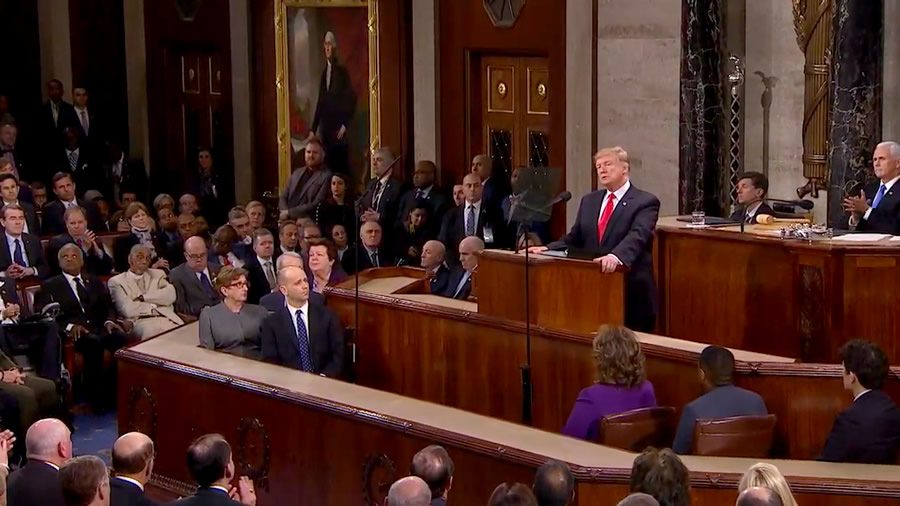“Greatness or Greatness”: Key Issues Addressed in the SOTU
February 7, 2019
President Trump had a central message for his second State of the Union Address, one that he revolved all of his arguments and key points around: “Choosing Greatness.” The Address was the 3rd longest in US history, lasting approximately and hour and a half, but in that time, the President covered a lot a political ground.
President Trump first called on Washington to reject “the politics of revenge, resistance and retribution” as he faced a deeply divided Congress for his State of the Union speech. He proclaimed it was time “to bridge old divisions, heal old wounds, build new coalitions, forge new solutions and unlock the extraordinary promise of America’s future”.
President Trump used his State of the Union address to announce he will hold a two-day summit with North Korean leader Kim Jong-un in Vietnam this month. According to the president, Kim and President Trump’s first meeting last June in Singapore opened a path to peace. There is yet to be a public plan for how denuclearization could be implemented.
Denuclearizing North Korea is something that has eluded the US for more than two decades, since it was first learned that North Korea was close to acquiring the means for nuclear weapons. “As part of a bold new diplomacy, we continue our historic push for peace on the Korean Peninsula,” the president said in his address to Congress on Tuesday night.
“Much work remains to be done, but my relationship with Kim Jong Un is a good one,” announced President Trump.
The president also used his SOTU speech to campaign for the end of the HIV epidemic in the United States by 2030, targeting areas where new infections happen and getting highly effective cures and pharmaceuticals to people at risk.
“Together, we will defeat AIDS in America and beyond,” President Trump said in his speech. Funding was pledged, but it isn’t clear how much at this point.
President Trump also addressed the “chronic” US trade deficit and also the need for a change in Chinese policies to protect American businesses and workers.
In his speech, the president said: “I have great respect for President Xi, and we are now working on a new trade deal with China, but it must include real, structural change to end unfair trade practices, reduce our chronic trade deficit, and protect American jobs.”
Certainly wary of highlighting the recent shutdown controversy, Mr Trump made no mention of an emergency declaration of a national emergency amid border control talks in his remarks, but he did offer a lengthy defense of his call for a border wall. Despite this, he offered to negotiate with the opposition.
“I am asking you to defend our very dangerous southern border out of love and devotion to our fellow citizens and to our country,” he plead. “In the past, most of the people in this room voted for a wall but the proper wall never got built. I will get it built.”
In a key legislative move in reforming the criminal justice system, the president explained during his speech that after being sentenced to 35 years for selling crack cocaine and other offenses, SOTU guest Matthew Charles was released early last month. Charles said Wednesday on America’s Newsroom that being a guest of the president’s Tuesday was “a remarkable time.”
“It was something I’ll remember for the rest of my life. In my 52 years of living I’ve never experienced anything like it,” he said. According to the White House, Charles found God while in prison “completed more than 30 bible studies, became a law clerk, taught GED classes and mentored fellow inmates.”
Trump described the First Step Act Tuesday as a chance for nonviolent offenders to “reenter society as productive, law-abiding citizens.” The law, which is short for the “Formerly Incarcerated Reenter Society Transformed Safely Transitioning Every Person Act,” assesses the risk of incarcerated individuals to re-offend, and also provides them with incentives to engage in recidivism reduction programs.
The President invited 18 special guests, a list of which can be found here:
https://www.whitehouse.gov/articles/special-guests-president-trumps-second-state-union-address/


